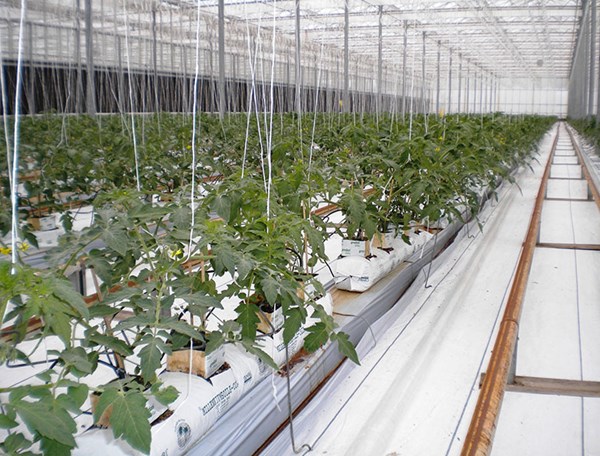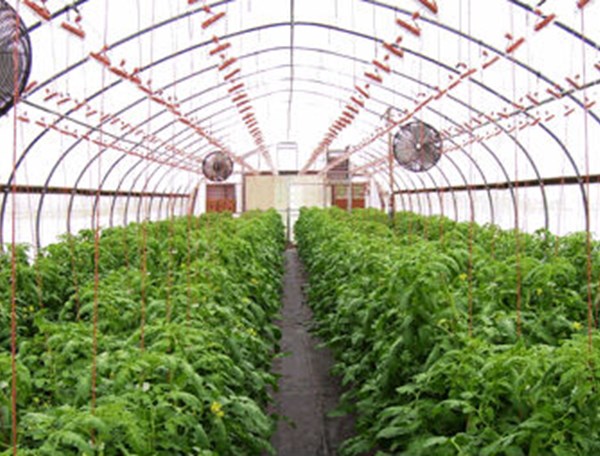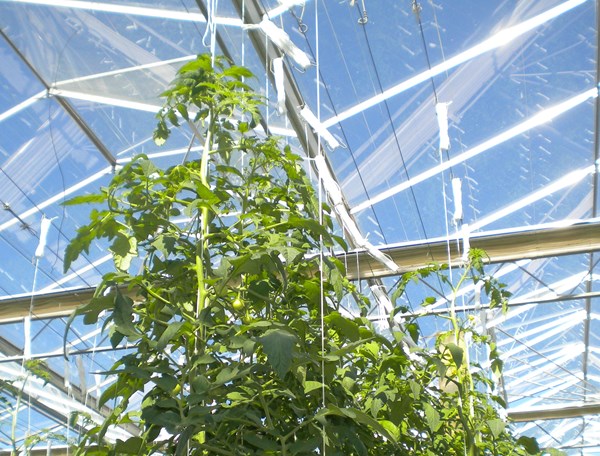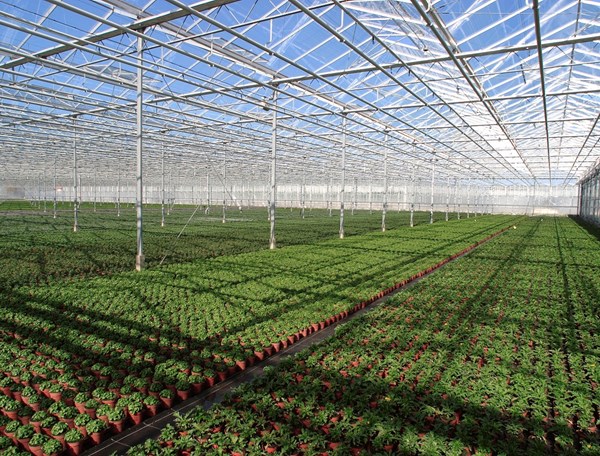Training Center
What is CEC and Why Is It Important? Part.1
Tuesday, October 4, 2022 | Troy Buechel
We occasionally receive questions about the CEC of our PRO-MIX products or about the nutrient retention properties of our products. Both questions tie into CEC. So what is CEC?
CEC is an acronym for cation exchange capacity and refers to a soilless medium or soil’s capacity to hold and exchange mineral nutrients. In this first part of a two-part article, we will talk about CEC, what it means and its importance.
Chemistry 101
To understand what CEC is we need to review a little chemistry. Conventional fertilizer comes in the form of salts. When mixed with water, these salts dissociate, or break apart, leaving individually charged nutrients. For example, calcium nitrate (a salt) dissociates in the water into calcium and nitrate:
Ca(NO3)2 + water = Ca++ + 2 NO3-
Both calcium and nitrate have an electrical charge. Calcium has a positive charge, and is called a cation, and nitrate has a negative charge, and is an anion. Figure 1 shows all plant elements and their charges. In the case of organic fertilizer, the same rules apply; microbes breakdown complex molecules into the same individual fertilizer elements as seen in Figure 1.
| Cations (positive charge) | Anions (negative charge) |
| Ammonium (HN4*) | Boron (Borate - BO3*) |
| Calcium (Ca**) | Chloride (CI*) |
| Copper (Cu*) | Nitrate (NO3*) |
| Hydrogen (H*) | Phosphate (H2PO4*) |
| Iron (Fe**) | Sulfate (SO4**) |
| Magnesium (Mg**) | |
| Manganese (Mn**) | |
| Potassium (K*) | |
| Dosium (Na*) | |
| Zinc (Zn**) |
Figure 1. When fertilizer elements dissociate in water, they are classified as either cations or anions. Because of these charges, they can be electrically bound to soilless media particles.
Negative Charge
Soil and soilless media particles (peat moss, vermiculite, bark, coir, calcined clay, etc.) have electrical charges on their surfaces. If there is a negative charge on the surface of a growing medium particle, then it contributes to the cation exchange capacity.
Positive Charge
Positively charged elements (cations) bind to these negative sites on the media particles and later can be exchanged for another element and then used by the plant. The more negatively charged sites that are found on these particles, the higher the cation exchange capacity of the growing medium. Cation exchange capacity is measured as milli-equivalents per 100 grams of growing medium (meq/100g); however, it could also be measured as meq/100 cm3.
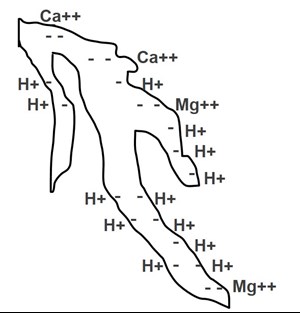
Figure 1. The peat particle pictured has negative charges that has cations attached to these sites. The number of elements retained as seen in this picture, represents that cation exchange capacity of this peat particle.
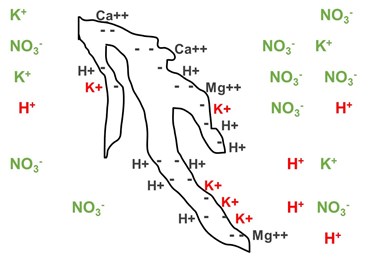
Figure 2. The same peat particle as seen in Figure 1. with potassium nitrate fertilizer added. The potassium nitrate dissociates into individual elements shown in green. Since the ratio of potassium is high compared to the hydrogen (H+, or acid ions) on the peat, some of the hydrogen is exchanged for potassium (these elements are in red).
Strongest to Weakest Elements
The binding strength of elements to these exchange sites varies depending on the elements electrical charge (+1, +2, etc.) and what element it is. Below lists in order the strongest held elements to the weakest held elements on cation exchange sites on clay particles. What this means is that calcium (Ca++) or magnesium (Mg++) is less likely to come off the exchange site than sodium (Na+), potassium (K+) or ammonium (NH4+). Therefore, since potassium is a weakly adsorbed cation and is less likely to bind to an exchange site if calcium is present, potassium is more likely to be leached from the growing medium.
Strongest -------------> Weakest
H+ > Ca++ > Mg++ > K+ = NH4+ > Na+
Advantages of a High CEC
The advantage of a high CEC is not only that the soil or soilless media can hold a lot of fertilizer elements and give them back to plants later, but also it can help buffer or resist a change in pH. For example, if you add limestone to an acidic clay soil, the calcium and magnesium can displace hydrogen (acid ions) from the CEC sites.
The hydrogen bonds with the carbonate coming from the lime, causing an increase in the pH of the clay soil. The more hydrogen ions that are retained by the soil, the more limestone that is needed to adjust the pH of the soil.
Likewise, if fertilizer is applied to a soil, many of these fertilizer elements could bind to the CEC sites; therefore, soils with high CEC require higher fertilizer application rates to compensate for this. Later if fertility levels decline in the soil, some of these fertilizer elements may be exchanged and then become available for plant usage.
Soils and soilless media particles can also have positive charges and this attracts negatively charged particles; these positive sites contribute to the anion exchange capacity of the growing medium. In comparison, the cation exchange capacity is more significant in a soilless media than the anion exchange capacity.
Part 2: The Role of CEC in Soilless Growing Medium
In part two, we will discuss the specific role of CEC in soilless growing medium. Although CEC has value in soilless media, it is not significant when it comes to nutrient exchange and pH management as it is with the soil.
If you have questions about CEC and how this relates to our line of PRO-MIX and peat-based products, please contact your Premier Tech’s Grower Services Representative.
PRO-MIX® is a registered trademark of PREMIER HORTICULTURE Ltd.
Related Articles
-
Greenhouse Herb and Vegetable Production – Part 4/4 – Growing Media
In this fourth and last part of our series on growing greenhouse vegetables and herbs, we will address the appropriate growing medium to use.
-
Greenhouse Herb and Vegetable Production – Part 3/4 – Greenhouse Environment
In this third part of our series on growing greenhouse vegetables and herbs we will focus on the ideal greenhouse environment.
-
Greenhouse Herb and Vegetable Production – Part 2/4 – Greenhouse Structure
In this second part of our four-part series on growing vegetables and herbs in the greenhouse, we will focus on the greenhouse structures needed to produce quality crops.
-
Greenhouse Herb and Vegetable Production – Part 1/4 - Location
In this four-part series, we will look at the ideal location, structures and environment needed to grow vegetables and herbs in a greenhouse production facility. In this first part, we will discuss the first step: finding the ideal location to start a greenhouse production facility.

 Where to find our products
Where to find our products
